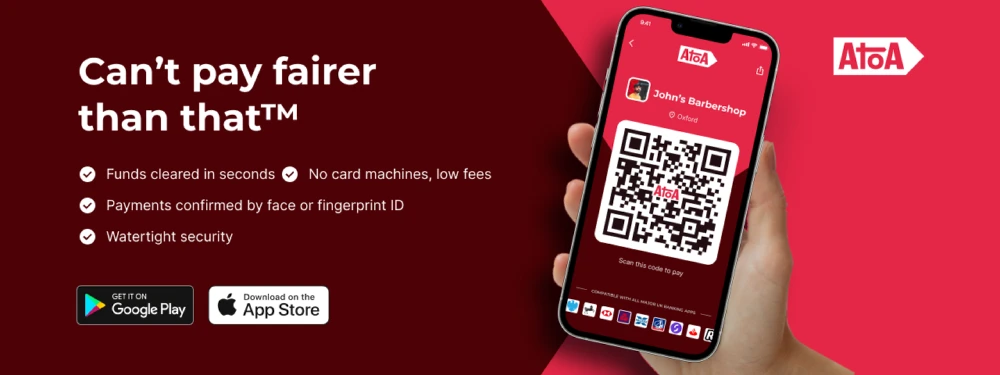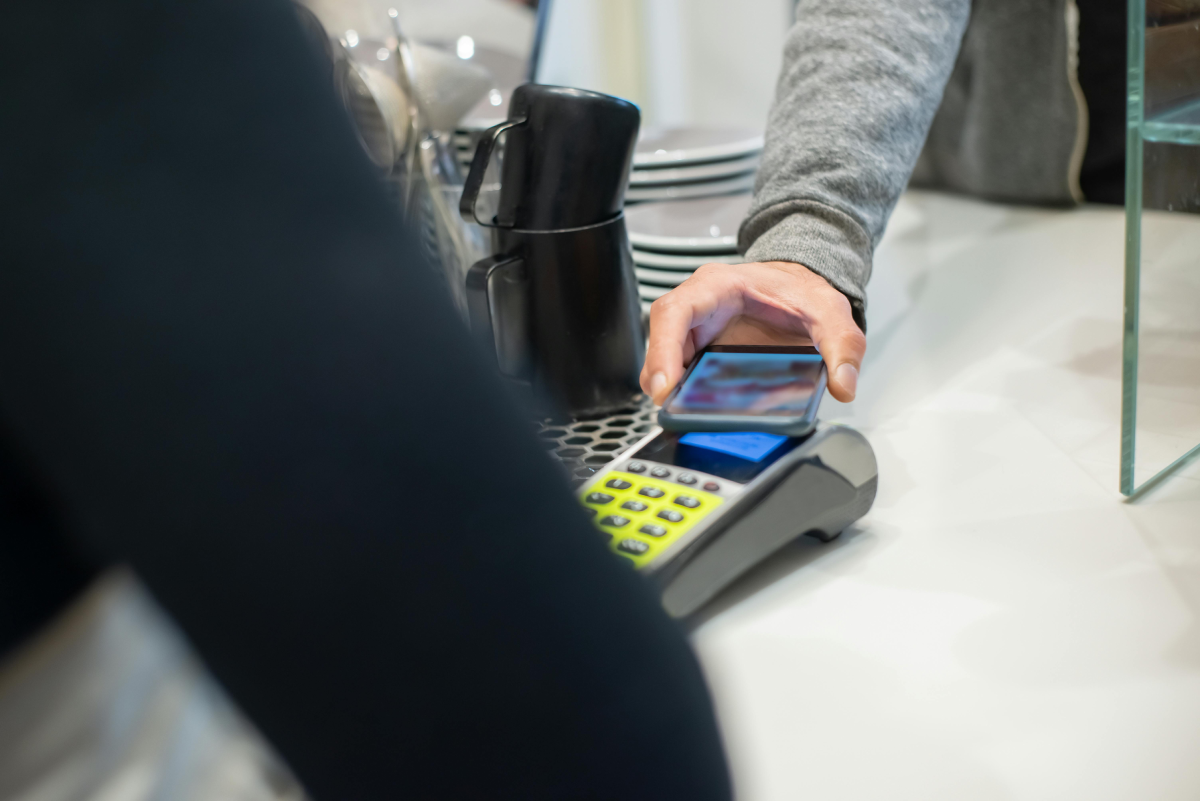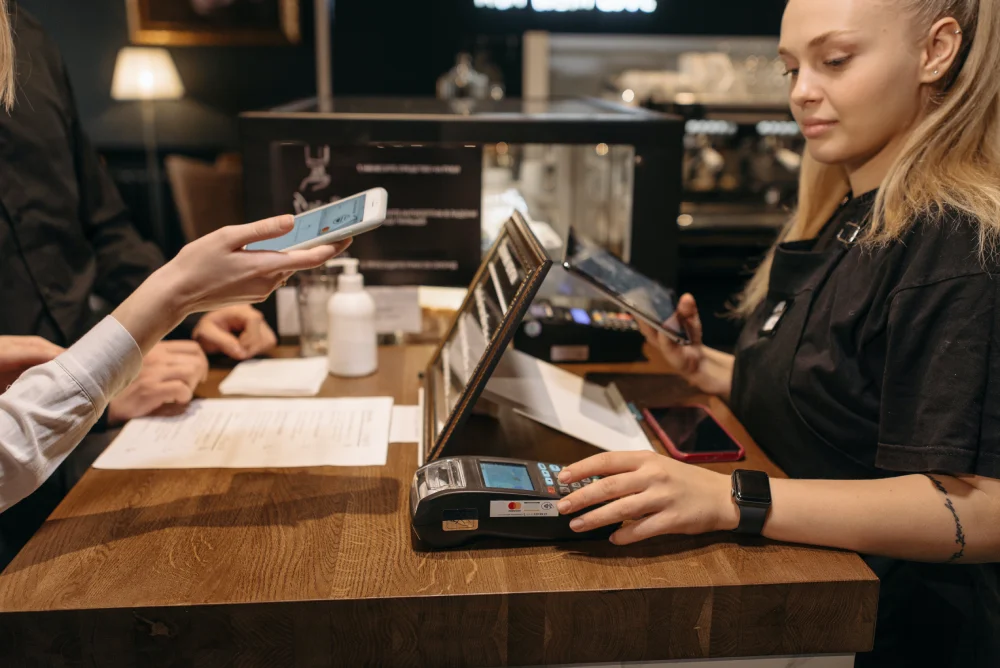Ready to get started?
Get paid faster and save up to 50% on fees with Pay by Bank.
E-commerce is taking the UK by storm. Nearly 60 million users are proving this with their online presence. The same Statista report says the industry has already earned about £133 billion in revenue. Experts believe this market will expand and attract more entrepreneurs searching for ways to open an e-commerce business. Is that you? If so, we’ve got some of the information you need to start building your online business.
What is an e-commerce business?
We’re guessing you already know this, but an e-commerce business is a shop that operates online. It’s where you can browse and buy things over the internet, instead of going to a physical store.
Why 2024 is a great year to start an e-commerce business
As we’ve mentioned before, e-commerce continues to grow. Rapid expansion, low overheads and massive customer demand may be just a few reasons why launching your online shop in 2024 could be a huge success. Here’s a little more on why:
- The UK has one of the biggest e-commerce markets in the world with a huge customer base ready to buy online. You just need to reach them!
- Online shopping is only getting more popular and is expected to grow annually.
- Setting up an online business in the UK is relatively straightforward. You can manage your stock or inventory online with many platforms and services available to help.
- Starting and running an e-commerce business can be much cheaper than a physical store. You don’t need to pay rent, buy and maintain furnishings, or hire any staff if it’s a small store.
- You can run an e-commerce business from anywhere with an internet connection, giving you a remote work option.
With the right product or service and a solid e-commerce business plan, there’s potential for success in 2024 and beyond. The next section guides you through the essential steps before you make it official…
How to open an e-commerce business in 2024
Maybe you’re running a brick-and-mortar store and want an online presence, or you want to share unique products with a global audience. Whatever stage of the business journey, here are some top tips to find your feet in e-commerce.
Decide what you want to sell
Every e-commerce business starts with a solid idea provides something in demand and is profitable. As you explore the potential of this idea, think if there is a market for it, and the profit potential. Answering these questions will give you a clearer picture of what to sell online.
Set your business model
So, you have a great idea for an online store. Now, it is time to decide which business model it works under. This will form the blueprint for your e-commerce strategy. How do you get your products or services out there? Whom are you selling to? Some entrepreneurs even decide on the business model, and the idea follows.
There are four main business models you can choose from. Let’s take a look closer at them.
Business to consumer (B2C): Most online stores use the B2C model, which means your business will sell directly to consumers. It’s like an online version of a traditional retail store – you stock up on products to sell them.
Business to business (B2B): The B2B model positions your business as a supplier for other companies, not just individual consumers. For instance, companies that sell software or wholesale products. This model is great for businesses that deal with big orders or manufacture products in-house.
Consumer to consumer (C2C): C2C is when you sell products and services directly to customers. Plus, you don’t have to worry about finding suppliers or stocking up on products. eBay and Etsy are great examples of this business model.
Consumer to business (C2B): C2B is when individuals offer their services to businesses, such as freelancing, where you sell skills to companies that need your expertise.
Research your competition
Before you launch a new venture, check out the competition. See what they’re doing well, where they’re falling short, and how you can be different from them. By identifying gaps in the market, you can find your unique selling point and stand out from the crowd.
Write a business plan and register your company
Next, it’s time to register your e-commerce business with the UK government. They’ll ask for your address, business structure, and other details to register your business and make it legally binding. You can register your business online within 24 hours. However, if your business is ‘limited’ register it by post.
Marketing, branding, and the other fun stuff
Creating a strong brand identity in the competitive world of e-commerce is crucial. So, as our guide on how to open an e-commerce business unravels, the next step is a little more fun. It’s time to create a brand identity. This usually includes a logo, brand name and other design elements. Think of it like building a personality for your business that sets how customers think about your brand.
How to set up an inventory for an e-commerce business
A strong logistics and inventory management system is one of the key factors of this business. Without it, your business risks falling apart.
Inventory management: Get a reliable inventory tracking system to monitor stock levels. Choose a suitable storage location that suits your business model considering proximity, cost and size.
Shipping and delivery: Partner with a dependable courier and negotiate your preferred rates. Make sure that they offer services like packaging and labelling for added efficiency.

How to start an e-commerce business without inventory
Are you tired of doing stock checks? If so, you can think about exploring an inventory-free e-commerce business plan. This concept gives you the freedom to manage the business remotely. Let’s explore some of the exciting options on how to open an e-commerce business without inventory.
Dropshipping
Sell products without having to stock them. Partner with suppliers who will do the heavy lifting for you. They handle the shipping while you focus on marketing. Learn more about this opportunity here.
Print-on-demand
Design for products like t-shirts, mugs, pillows, phone cases, or other everyday items, which can be printed when an order is made. Margins are higher as the platform handles production, printing and shipping for you.
Digital products
Create and sell digital products like ebooks, templates, and digital paintings which can be sold on a number of platforms. Customers can download the file, which means you can sell them multiple times without additional costs.
Affiliate marketing
Earn a commission for promoting products and driving sales for other businesses. Use your online presence and content creation skills through blog posts, social media posts, videos or email marketing campaigns.
Product curation
Select and present a collection of products for a specific target audience and promote it to earn a commission. It is like being a personal shopper for your customers and showcasing a curated collection in an engaging way.
Fulfilment by Amazon (FBA)
Use Amazon’s storage, shipping, and customer service to sell your products or ones you source. You need a strong marketing plan to increase visibility and sales.
Examples of successful e-commerce businesses in the UK
It’s not just the big names like Amazon and eBay that are making waves; many UK-based e-commerce businesses are also doing well. Let’s look at some of the examples.
Argos
Argos is leading the way in omnichannel retail with 70% of sales originating online, as reported by Internet Retailing. 90% of the UK population live within 10 miles of an Argos location, which ensures convenient click-and-collect or same-day Fast Track delivery options on e-commerce orders. Argos continues to reshape the shopping experience with a solid online and in-store offering.
ASOS
This UK-based online fashion retailer is at the forefront of the e-commerce revolution. Established in 2000, it has extended to other countries and expanded its distribution channels.
Debenhams
Once a departmental store chain, Debenhams is now an online-only store. The brand has a range of fashion, beauty, home appliances, furniture, electrical, and more.
Gymshark
Gymshark’s e-commerce success story is captivating with a remarkable 22% revenue surge in the last quarter. In July 2024 alone, they raked in a staggering £47 million in online sales. People love what they see with 2 or 3 out of 100 website visitors spending an average of £120-£140 per order. With over 12 million sessions in the same month, Gymshark dominates the e-commerce gymwear space.
Waitrose
Waitrose & Partners is a renowned grocery store chain in the UK selling high-end and organic products. Beyond groceries, it’s an all-in-one destination for culinary inspiration. Delicious recipes, a vast selection of wines and spirits, and gardening supplies are available on their online store.
How to choose the right payment solution
There are four main factors to consider while choosing a payment solution.
Transparent fees: Read the contract to avoid any hidden charges including transaction fees, chargebacks and service fees. Don’t hesitate to negotiate the fees with your payment provider, especially if your transaction volumes are high.
Easy integrations: Make sure that your payment solution connects easily with your website and other business-boosting tools such as accountancy software.
Convenience: First things first, do you find it easy to use? If you do, that’s a great start. The payment platform should make sales easier for both your team and customers.
Security: Prioritise a payment solution provider that uses strong password processes and protects your customer’s data. PCI compliance for all transactions is a must. Make sure you regularly update the software and hardware.
You can consider signing up for an account-to-account payments solution so that you can enjoy instant payments and not have to wait days to get paid. Compare the fees and customer service in advance. They are more reasonable than card fees.
The takeaway
Is opening an e-commerce business lucrative? Given the booming market and the increasing number of online shoppers, we think so. It’s a great time to enter this industry and make your mark. By following our guide on how to open an e-commerce business, you can establish your store, too.
💡 Having the right business tools and mindset is all you need to succeed. It may seem like a lot, but if you focus on adapting to market trends and providing a great customer experience, you’ll be well on your way to success.
FAQs about starting an e-commerce business
Should I trademark my brand name?
Yes, as it protects your business from unauthorised use. A trademark gives you exclusive rights to your brand identity, preventing others from using it without your permission.
Why is customer support important for online shoppers?
Customer support helps build trust, loyalty, and a positive brand reputation among customers. Responsive and helpful customer support can make your business stand out and encourage repeat purchases.
Do I need a mobile app for my e-commerce business?
While there isn’t an immediate need, in-app shopping can increase sales as it makes purchases convenient and accessible for customers from just about anywhere. However, weigh up the costs and resources involved in developing and maintaining an app before investing too much time.
Which payment solution works best for e-commerce businesses?
There are several payment providers available. Some include Atoa – Instant Bank Pay, Stripe, PayPal and Apple Pay. Be sure to compare the transaction fees and how easy to use these solutions are before you decide.



